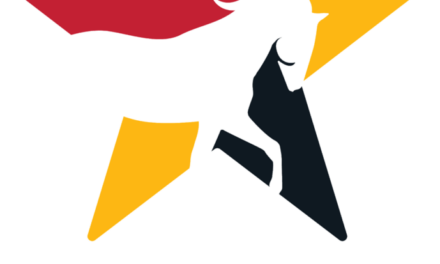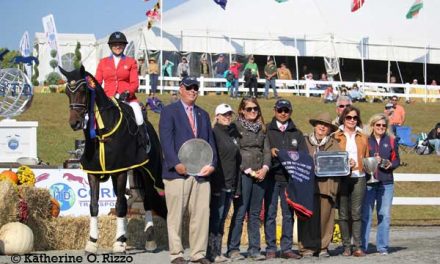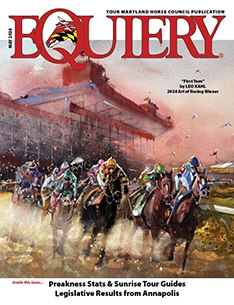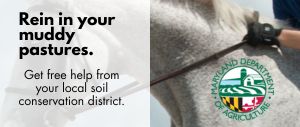Newer Sports Gain Popularity in Maryland
by Katherine O. Rizzo (first published in the January 2023 Equiery)
With over 30 horse sports to choose from, Maryland competitors have started gravitating towards two newer sports that have emerged within the state: Polocrosse and Working Equitation. Two Maryland Horse Council industry professional members are helping to spread the word about these sports, hosting clinics and regional and national competitions right here in Maryland.
 Bay Area Polocrosse
Bay Area Polocrosse
Bay Area Polocrosse is one of three American Polocrosse Association clubs in Maryland. Based out of Waldorf, the club was established in 2000 and currently has about 25 active members. Club president, Charla Cameron bases the sport’s popularity on its “family friendly” atmosphere. “It is a very family friendly activity with everyone involved making it fun for all,” she said.
Cameron explained that the sport offers levels from leadline through international competition and the club has members from toddlers to those in their early 80s. “I got involved with my sister in 2007,” Cameron stated. “We started attending practices and just got hooked!” Lisa Poe, the club’s treasurer, joined in 2019 when her oldest daughter was introduced to the sport by a friend. “We’ve become friends with everyone, even people from other clubs,” Poe said. “They are a super supportive group of people that are competitive on the field but friends off the field.”
Polocrosse was created in Australia as the “king of the one-horse sport” in that, unlike polo, each player only needs one horse to participate. Players can ride any breed of horse and ride in English, Western or Australian type tack. Teams consist of three members on the field at a time with each player carrying a lacrosse racket and trying to score points with a rubber ball.
“The number one player is the offensive player with the number three defending the goal and the number two player being both offense and defense,” Poe explained. “The goal is to get the ball to the number one player, who is the only player who can score.”
Each match has three six-minute chukkas with players staying on the same horse for the whole match. Most tournaments consist of two matches per day and last two or more days.
Bay Area Polocrosse participates in both regional and national competitions. Regional Finals alternate each year with National Finals. There is also World Cup competition that occurs every four years. At the regional and national level, teams can be mixed gender but at the World Cup, women compete against women and men against men.
Longtime Bay Area Polocrosse member Emma Strider is currently on the U.S. short list for the 2024 World Cup and has competed in Australia and South Africa several times. “The entire polocrosse community is a big family,” Strider said. “I’ve spent two summers playing in South Africa, staying with families I’ve met through the sport.” Strider explained that the World Cup hosts eight countries. Competition “pools” are based on the results from the previous World Cup.
“Once you are rated at a certain level of play, you can apply to be on a U.S. World Cup team and then a Long List of 20 women and 20 men is created,” Strider added. “After the National Finals in 2021, that list was cut down to eight women and eight men.” The final team to represent the U.S. will not be decided until after the May 2023 National Finals.
Strider is heavily involved in the Bay Area Polocrosse club as their unofficial club coach. “I love helping [to bring] up the lower level players and putting my time and energy back into the sport,” Strider said.
 Oak Spring Bling
Oak Spring Bling
Oak Spring Bling is owned and operated by Barb Sullivan of Woodbine. Though the official business is a gift and tack store, Sullivan is one of the “founders” of Working Equitation here in Maryland and currently is the only facility in the state to host U.S. Working Equitation licensed shows.
“The sport originated in Southern Europe and was invented by a French trainer,” Sullivan explained. “It is supposed to mimic the training skills a horse and rider would need when encountering farm work.” The modern version of the sport includes dressage, obstacle and cow work phases, though here in Maryland, the cow phase is skipped. “You need a lot of space and cows used to this sort of thing for that phase,” Sullivan added.
Riders can use any type of tack to participate in this sport as well, and there are levels from walk/trot on up. “I find this to be so welcoming,” Sullivan said. “I got into the sport in 2019 as a way to keep riding my pony but not having to jump big things or compete at a high level in dressage.” Sullivan added that even though horses and riders are asked to perform often technical skills, the overall physical stress on the horse and rider is a lot less than other disciplines. “There really is no limit to the type of horse or age or anything like that and this really is the most supportive sport I’ve ever participated in. It is welcoming to everyone.”
Sullivan explained that the Dressage test even at the L1 (intro) level is more complicated than those of classical dressage with movements meant to replicate what will be needed in the Ease of Handling (obstacle) phase. At the L2 and up levels, there is an added Speed Round which is judged on the time it takes to complete the obstacles.
“The sport has grown very quickly here in Maryland and all the clinics and competitions we offer fill on the first day of registration,” Sullivan said. Clinics typically can handle 12-16 riders per day, with licensed shows being open to 20-25 riders a day.
In 2023, Oak Spring plans to offer clinics with several licensed officials and instructors as well as one licensed show and several “play days.” “As an amateur rider, I cannot teach, but I can put out the obstacles so that others can come and practice on their own!” she said.













